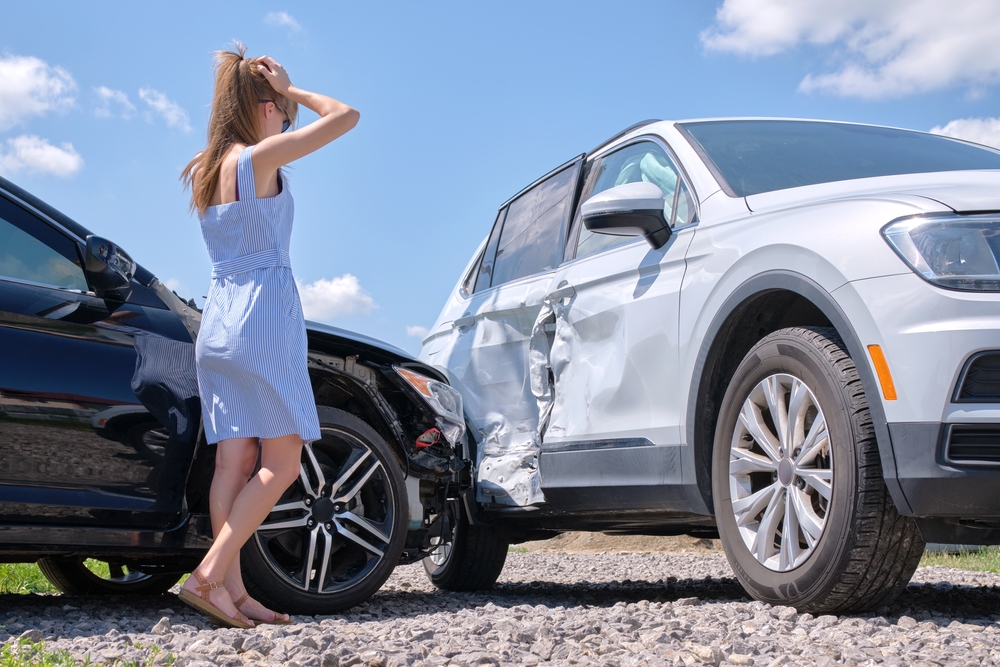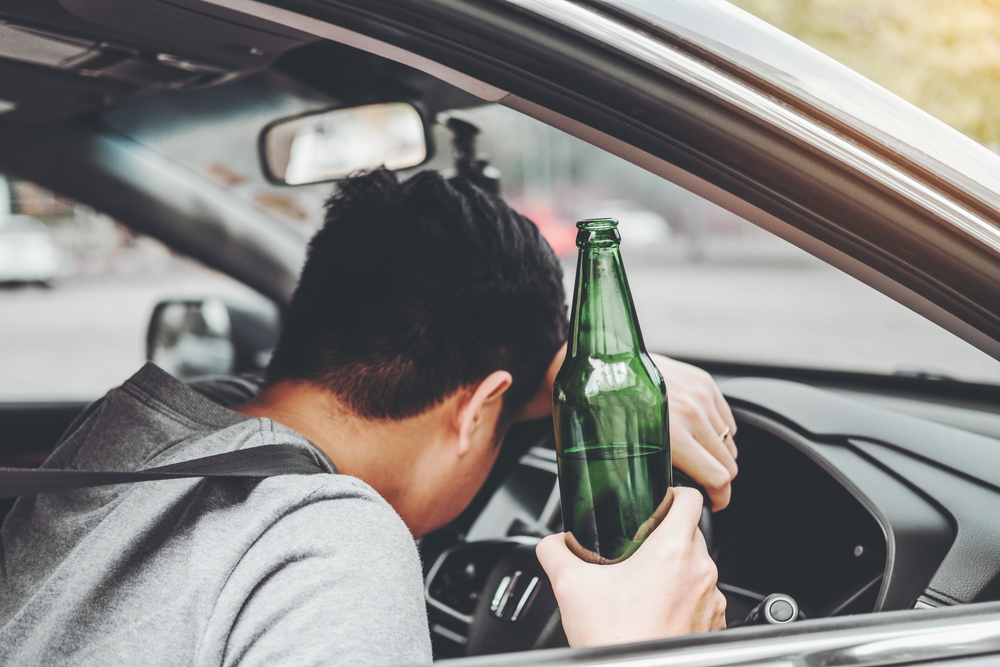You're standing there, adrenaline pumping, staring at crumpled metal. But the real collision? It's about to happen between conflicting stories and crafty insurance adjusters.
Fault isn't always clear-cut, and the wrong call could cost you thousands.
In this guide, we'll reveal:
- Key factors that influence fault determination
- How to prove it
- Why partial fault matters in Texas law
Don't let someone else's negligence wreck your future. Our battle-tested car accident lawyers at Francis Injury have seen every trick in the book–and know how to counter them all. Get your free consultation now by calling us at (817) 329-9001. We'll break down the facts, expose the truth, and fight for the compensation you deserve.
Understanding Fault in Car Accidents

In order to tell who is at fault in a car accident, you have to prove which party or parties acted with negligence. To do so, you must demonstrate four key factors: duty, breach of duty, causation, and damages.
1. Duty of Care
The first factor in establishing negligence is proving that the defendant owed a duty of care to the plaintiff. In the context of driving, all motorists have a legal obligation to operate their vehicles safely and obey traffic laws to avoid harming others. This duty of care extends to pedestrians, other drivers, passengers, and anyone else affected by their driving.
2. Breach of Duty
Once we’ve established the duty of care, the next step is demonstrating that the defendant breached this duty. A breach occurs when a driver fails to act as a reasonably prudent person would under similar circumstances. Examples of breaches include speeding, running a red light, driving under the influence, or distracted driving. Evidence such as traffic violations, witness statements, and police reports often supports this breach of duty.
3. Causation
Causation links the breach of duty to the accident and resulting injuries. There are two types of causation to consider: actual cause (cause-in-fact) and proximate cause (legal cause). Actual cause means that the accident would not have occurred "but for" the defendant's actions. Proximate cause means that the defendant's actions were sufficiently related to the injury to hold them legally responsible. To prove causation, it's essential to show that the breach of duty directly led to the accident and the plaintiff's injuries.
4. Damages
The final element of negligence is proving that the plaintiff suffered damages as a result of the accident. Damages can be economic, such as medical bills, lost wages, and property damage, or non-economic, such as pain and suffering and emotional distress. It's crucial to document all damages thoroughly to substantiate the claim.
Common Accident Scenarios & Who Is Usually At Fault
Traffic Violations
Violations such as running a red light, speeding, and failing to yield right-of-way often point to the negligent party.
Rear-End Collisions and Left-Turn Accidents
Certain types of accidents have clear indicators of fault. In rear-end collisions, the trailing driver is typically at fault due to the responsibility of maintaining a safe distance. In left-turn accidents, the driver making the turn is usually at fault for not yielding to oncoming traffic.
Manufacturer Liability
Manufacturers can bear liability for car accidents if a defect in the vehicle contributed to the crash. This type of liability falls under product liability law, which holds manufacturers responsible for ensuring their products are safe for consumer use. There are three main types of defects that can result in manufacturer liability:
- Design Defects: Flaws in the design of the vehicle that make it inherently unsafe. An example is a car model prone to rolling over due to a high center of gravity.
- Manufacturing Defects: Errors that occur during the production process, leading to unsafe components. For instance, a batch of brakes that fail due to improper manufacturing.
- Failure to Warn: Inadequate instructions or warnings about the proper use of the vehicle. This includes failing to inform consumers about potential risks associated with using the vehicle.
Government Liability
Government entities can also be liable for car accidents under certain conditions. This typically involves negligence in the maintenance or design of roadways. Examples include:
- Road Design Defects: Poorly designed roads that create hazardous conditions for drivers. For example, a sharp curve without proper signage or lighting can lead to accidents.
- Maintenance Failures: Neglecting to repair or maintain roads, such as failing to fill potholes or fix broken traffic signals. These conditions can create dangerous driving environments.
- Obscured or Missing Signs: Missing or obscured traffic signs and signals can lead to confusion and accidents. Governments have a duty to ensure that road signs are visible and well-maintained.
Methods of Proving Fault
There are several methods that insurance companies and courts use to determine fault, including:
Police Reports
Police reports serve as official documentation of an accident and often contain crucial details that indicate fault. Officers at the scene record statements from involved parties and witnesses, diagram the accident, and may note any traffic violations.
Witness Statements
Witnesses can provide third-party accounts of the accident, offering perspectives that the involved parties may not see. Their statements can confirm or refute drivers' actions, such as whether someone ran a red light or was speeding.
Accident Scene Evidence
Physical evidence from the accident scene, such as skid marks, vehicle damage, and road conditions, helps reconstruct the event. Photos and videos taken immediately after the accident can capture important details.
Vehicle Damage Analysis
The location and extent of vehicle damage can indicate the nature of the collision and help determine fault. For example, damage to the rear of a vehicle typically indicates a rear-end collision, with the rear driver usually at fault.
Admission of Fault
Sometimes, one driver may admit fault at the scene or later. These admissions can be verbal or written and are strong indicators of liability. This is why, as attorneys, even if you believe you are at fault, we always recommend that you be very careful with what you say about the accident to anyone.
Comparative Negligence in Texas
Fault is not always black and white–sometimes, multiple parties can bear responsibility for causing the accident. This is where comparative negligence comes in.
What is Comparative Negligence?
Comparative negligence is a legal doctrine used to determine the degree of fault among parties involved in an accident. This system allocates fault based on each party's contribution to the incident, affecting the compensation they can receive. Unlike pure contributory negligence, where a plaintiff who is even slightly at fault cannot recover any types of damages, comparative negligence permits recovery but reduces it based on the plaintiff's percentage of fault.
How Comparative Negligence Works in Texas
Texas law follows the "modified comparative negligence" rule, also known as the "51% rule." Under this rule, an injured party can recover damages only if they are 50% or less at fault for the accident. If the plaintiff is more than 50% at fault, they cannot recover any damages.
Calculating Damages under Comparative Negligence
In Texas, a plaintiff's compensation is reduced by their percentage of fault. For example, if a plaintiff is awarded $100,000 in damages but bears 30% of the fault, they will see their compensation reduced by 30%, resulting in a final award of $70,000.
Role of Insurance Companies
How Insurance Companies Investigate and Determine Fault

Insurance companies play a crucial role in determining fault after a car accident. They conduct thorough investigations, reviewing all available evidence, such as police reports, witness statements, and physical damage to the vehicles involved. The adjuster assigned to the case will often visit the accident scene, interview witnesses, and gather any other pertinent information.
The Adjuster's Role and the Claims Process
Insurance adjusters are responsible for evaluating the claims made by the involved parties. They assess the damage, determine the extent of liability, and calculate the settlement amounts. Adjusters rely on a combination of evidence, including photographs, videos, and expert opinions, to make informed decisions. Their goal is to resolve claims efficiently while minimizing the insurance company's liability.
Evidence Collection by Insurance Companies
Insurance companies collect various forms of evidence to support their fault determination. This includes:
- Police Reports: These provide an official account of the accident and often include the officer's opinion on who was at fault.
- Witness Statements: Third-party accounts can offer an unbiased perspective on the events leading to the accident.
- Accident Scene Photos: Images of the scene, vehicle positions, and damage can help reconstruct the accident.
- Expert Opinions: Accident reconstruction experts can provide detailed analyses of how the accident occurred.
Challenges in Fault Determination
Determining fault is not always straightforward. Disputes may arise if the involved parties provide conflicting accounts or if the evidence is inconclusive. In such cases, the insurance company may conduct a more detailed investigation or consult with legal experts to resolve the matter.
Impact of Fault Determination on Claims
The determination of fault has a significant impact on the claims process. The at-fault party's insurance company is typically responsible for covering the damages. However, in states with comparative or contributory negligence laws, the degree of fault assigned to each party often adjusts the compensation amount.
How a Lawyer Can Help
Navigating Legal Complexities
Car accident cases often involve complex legal issues. A lawyer can navigate these complexities, ensuring they follow every legal procedure correctly. They understand the intricacies of state-specific laws, such as Texas' comparative negligence rules, which can affect compensation.
Gathering and Presenting Evidence
Lawyers are skilled at gathering crucial evidence, such as accident scene photos, police reports, and witness statements. Effectively presenting this evidence in negotiations or court is essential for proving fault.
Negotiating with Insurance Companies
Insurance companies aim to minimize payouts. A lawyer negotiates on your behalf to ensure you receive fair compensation. They understand the tactics insurers use and can counter them effectively, leveraging evidence and legal knowledge to strengthen your case.
Ensuring Fair Compensation
A lawyer helps calculate the full extent of damages, including medical expenses, lost wages, and pain and suffering. They ensure that you pursue the maximum compensation available, considering both current and future costs related to the accident.
Providing Peace of Mind
Dealing with the aftermath of a car accident can be stressful. Hiring an attorney provides peace of mind, allowing you to focus on recovery while they handle the legal and procedural aspects of your case.
Case Studies and Examples
Example 1: Rear-End Collision Involving Drunk Driver

In Alonso v. Castro in Cameron County, Texas, the plaintiff stopped at a stop sign was rear-ended by a driver with a blood alcohol content of 0.18. The defendant admitted liability due to intoxication. The plaintiff sustained soft tissue cervical and thoracic injuries requiring extensive medical treatment, including orthopedic and pain management therapies. Despite the defense arguing pre-existing conditions, the jury awarded the plaintiff $300,000, recognizing the significant impact of the injuries on her lifestyle.
Example 2: Multi-Car Rear-End Crash
In Rodriguez v. Corsa Transportes, Bexar County, Texas, the plaintiff stopped upon seeing traffic ahead and was rear-ended, causing a chain reaction involving multiple vehicles. The defendant, several cars behind, admitted liability. The plaintiff suffered a severe shoulder injury and post-traumatic brachial plexus neuropathy, leading to debilitating pain and an inability to return to work. The jury awarded $450,000 for the extensive impact on the plaintiff's life and livelihood.
Example 3: Debilitating Injury from Truck Accident
In Davis v. Aggregate Haulers in Bexar County, Texas, a tractor-trailer rear-ended a vehicle, causing it to roll multiple times. The plaintiff, a passenger, sustained a fractured knee, bruising, and a closed head injury. Despite a pre-existing brain injury, the jury determined the defendant was 100% responsible and awarded $10,222,667.
Example 4: Passenger Injury in Rear-End Collision with Tractor-Trailer
In Major v. Mercer Controls, Inc. in Harris County, Texas, the plaintiff, a passenger, was injured when their vehicle rear-ended a tractor-trailer parked illegally in a residential zone. The plaintiff suffered chronic back pain requiring two years of medical treatment. The case settled for $652,000 after the jury was selected, with both defendants disputing liability but ultimately agreeing to the settlement.
Get the Justice You Deserve

At Francis Firm Injury Attorneys, we've seen firsthand how the right approach to fault determination can be the difference between a life derailed and a future secured.
Ready to turn the page on this chapter of your life? We're here to help write the next one. Reach out to the Francis Firm Injury Attorneys at (817) 329-9001 today. Let's discuss your path to recovery—no obligation, just honest guidance.